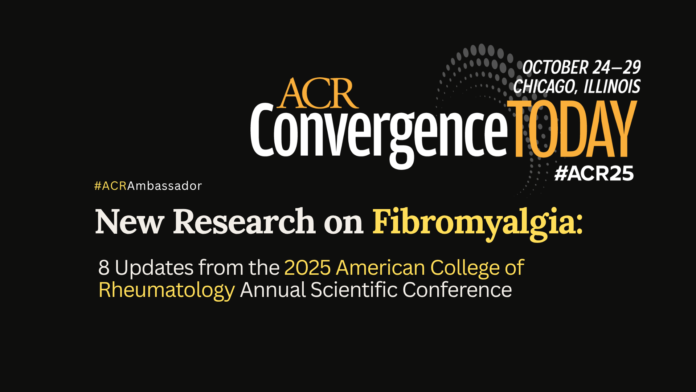The American College of Rheumatology (ACR) annual meeting brought important new insights into fibromyalgia care, from medications to digital therapies and healthcare system changes.
Here’s what patients need to know:
This large real-world study looked at more than 300,000 people with fibromyalgia to compare two common medications: duloxetine and pregabalin. The results showed that patients taking duloxetine were more likely to stick with their treatment and had fewer hospitalizations and emergency room visits compared to those taking pregabalin. While both drugs are used to manage fibromyalgia symptoms, duloxetine appeared to be the more effective option overall in everyday clinical practice.
A national survey of people living with fibromyalgia found that symptoms like pain, fatigue, poor sleep, and brain fog remain a heavy burden for many, even when they are receiving treatment. Most patients reported trying several different therapies, but many still felt their symptoms were not well controlled. The survey highlights the ongoing challenges people face with fibromyalgia and the need for more effective, personalized care options.
This study looked at a new digital clinic that combines virtual care with digital therapy tools for people with fibromyalgia. After six months, patients using the program reported less pain, better sleep, improved mood, and higher quality of life. These results suggest that technology-based care could be a helpful option for managing fibromyalgia symptoms alongside traditional treatments.
This U.S. study reviewed medical charts and surveyed doctors to understand how fibromyalgia is diagnosed and managed. It found that many patients face delays in getting a diagnosis, often seeing multiple providers first. Once diagnosed, treatment usually included medications, but doctors also recognized the need for non-drug approaches like exercise and stress management. The study shows that while awareness of fibromyalgia among physicians is improving, patients still experience challenges in receiving timely and comprehensive care.
This study explored how to redesign fibromyalgia care by working directly with patients, clinicians, and health system leaders. Through a co-design process, the group created guiding principles that emphasize better access to care, more personalized treatment options, stronger patient-provider communication, and support across the healthcare system. The findings highlight the importance of involving patients in shaping how fibromyalgia care is delivered to make it more effective and responsive to real-world needs.
This study used data from the UK Biobank to understand why some people who meet criteria for fibromyalgia receive a diagnosis while others do not. Researchers found that women, people with higher pain levels, and those with more mental health concerns were more likely to be diagnosed. In contrast, many people who fit the criteria still went undiagnosed, suggesting that fibromyalgia may be under-recognized in certain groups. The findings point to the need for greater awareness and more consistent approaches to diagnosing the condition
This updated review looked at clinical trials testing low-dose naltrexone (LDN) for fibromyalgia. The analysis found that LDN may help reduce pain and improve quality of life for some patients, with generally good safety and tolerability. However, the number of studies is still small, and larger trials are needed to confirm its benefits. These findings suggest LDN could be a promising treatment option, but more research is required before it becomes a standard therapy.
This study tested a new under-the-tongue tablet form of cyclobenzaprine (TNX-102 SL) for people with fibromyalgia. Results showed the medication reduced pain and was generally well tolerated, with fewer side effects than might be expected from traditional oral forms. The findings suggest this treatment could become a helpful option for managing fibromyalgia symptoms if confirmed in larger trials.
What This Means for Patients
These studies show progress on several fronts: better understanding of how current medications work in the real world, promising new therapies under development, and innovative models of care. They also highlight ongoing challenges, like delayed diagnosis and persistent symptoms despite treatment. The message is clear: fibromyalgia care is evolving, and patients’ voices are helping shape the future of treatment and support.

